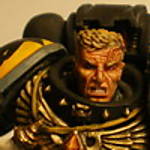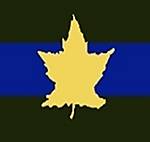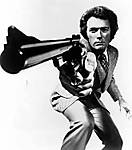Sorry for the 3 deleted posts, but in my text was some signs, not accepted by the software. So now the rest of my text:
For a military project, we was asked 2 years ago for an adequate desert camouflage colour, so I brought in RAL8020, knowing that RAL8000 is to much “dark” and “green” in front of dunes.
We have made a prototype in RAL8020 dull matt (I hope its correct translated), “Stumpfmatt"
We even displayed this vehicle last year at the EUROSATORY in Paris.
Which means, we would not have gone out with this vehicle/colour composition to the world biggest fair for military vehicles for “Nuts” or at least without the best available research.
Last year my wife recommend me to look for a hobby to get some distance from my job, so I returned to modelling, with focuss on the North African campaign. In the meantime I am not sure if my wife would recommend this again, because now I spend more time with my hobby than with her (as she says...)
Now, as a modeller, I have never seen RAL8020 on a vehicle in colour and/or photographed with the technic of the last years, but now it stand in front of my office. So I picked up all my old photos, showing RAL8000 in the desert and tried to analyse some b/w pictures for some modelling projects for myself, comparing this with my actuall colour pictures of this two colours.
So for all which are interested on the shade of the two main DAK basic colours simply photographed, and beside all other technical reasons, which could change the colourtone on computers, some photos of a truck, painted in RAL8000 matt

or same vehicle only from slightly different position (= sun angle), same camera, same time, but creating a slightly different colour tone

Note: Chassis colour and colour of the vehicle cabin structure covering the RAL8000 is in RAL7021 Schwarzgrau semi-bright
In comparation RAL8020 dullmatt, same camera, same season, different background, but 2years old photo:

And if you look very carefully, you will realize a slightly difference in the matt grade between the colour of the bonnet and the colour of the side panels. This is, because I have made a paint damage by myself, and we was forced to repaint the bonnet again, but with the paint from a new batch.
Means: Even in 2010, paint producers are not able to produce in every production batch exactly the same colour (or matt) shade, so its quite sure that this was more common 70 years ago.
On request, I can send this photos in max. resolution to those, interersted in.
Even as I am trying from model to model, to get more accurate with all the details, I am not so focussed on what is the “right” (and only) tone of RAL8000, even from 70 years ago, means darker, browner, greener etc., for me its much more interesting to see how the colour is different from RAL8020 or RAL7021, especially if the only known source is a b/w photo. Finally to say for my own, could it be this or that, to know which colour I have to use.
From my experience, I can say that RAL8000 is extremly acting like a “Chameleon”.
Studing the following pictures, its clear to see that the same colour is changing its appareance depending on the day-light, background (landscape), and so on. Independent beside all technical explanations for possible colour variations through photo paper, computer screens and so on.
If I would have known 20 years ago that I am ending in this discussion, I would have made more and better pictures.....
So the following pictures was made in Tunisia March/April, partially very cloudy weather, sometimes raining (with other words, similar as in the Tunisan campaign 1942/43). Always the same truck in RAL8000 dull matt, same camera (Minolta), same film quality, same unskilled photographer (=myself). All simply scanned in on my scanner some weeks ago. And on my computer, they colour looks as I have them in mind from 20 years ago, or in front of my office right now.



or this, which is interesting, because compared to the red paint of the Honda bike and the skin tone of my friends, the Unimog´s RAL8000 looks very dark, which simply is a result of a cloud, just covering the sun while photographing and creating a schadow on the right part of the photo. Tis as an info how even non technical photo/computer stuff could even be responsible for different colour shades on 70 years b/w photos

This was made in Europe, summer time, before the Tunisian travel, same camera, same film quality, same unskilled photographer, only to show colour impression with different sun light and background:


This one is my 2 nd truck, same colour as the 1st. Photo was made on a cloudless day in December 1993 around early afternoon, means sun in the zenit, because just south of the “tropic of cancer”, in the desert tringle Algeria,Mali, Mauretania, in fact in “no-mans land” and 2000 Kilometers without a gasoline station....

And I agree that all this colours on every single computer screen, or colour photos, printed on different papers what ever more, will probably have a different look.
But again: Their is a clear and remarkable difference between the darker, green-brownish RAL8000 and the brighter, a little bit red-toned RAL8020, which even should be remarkable on clear b/w photos.
Especially if you compare it with uniform colours, as Dave pointed out, even seen on wartime photos (note: Standard issue for DAK troops was olive tone, which faded out after some time, and only the Luftwaffen soldiers received the desert tan as standard) or the black Balkenkreuz.
I highly recommend to everybody the book “Afrikakorps in Farbe” of the Motorbuchverlag
http://www.amazon.de/gp/product/images/3613027941/ref=dp_image_0?ie=UTF8&n=299956&s=booksWhich even has opened a new, coloured world for me and a new sight about the campaign, especially for uniforms and their colour fading. And even a lot of the pictures, showing dust and chipping on vehicles and their colour tones are similar to my own experiences.
And you will even see that some thought vehicle colour fading or chipping is simply dust and even more dust, over dark grey RAL7021 and/or RAL8000, which you can indentify only if you see it in colour and not as “dark” or “bright” on a b/w photo.
And their is no doubt that colour qualities has (hopefully ?) changed in the last 70 years, to improve non-fading and better chipping resistance of vehicle colours.
So my inputs should be seen as an different approach, in an “neverending story”
Erich












































